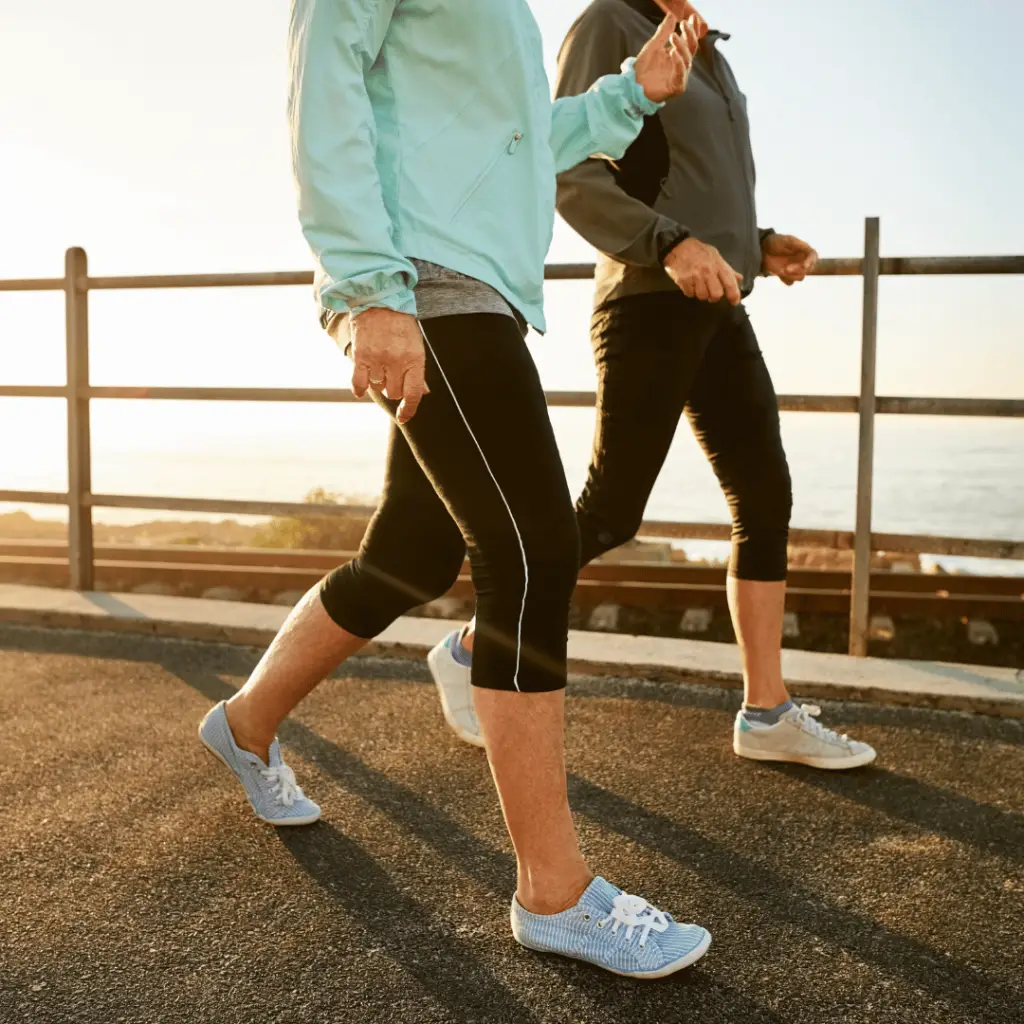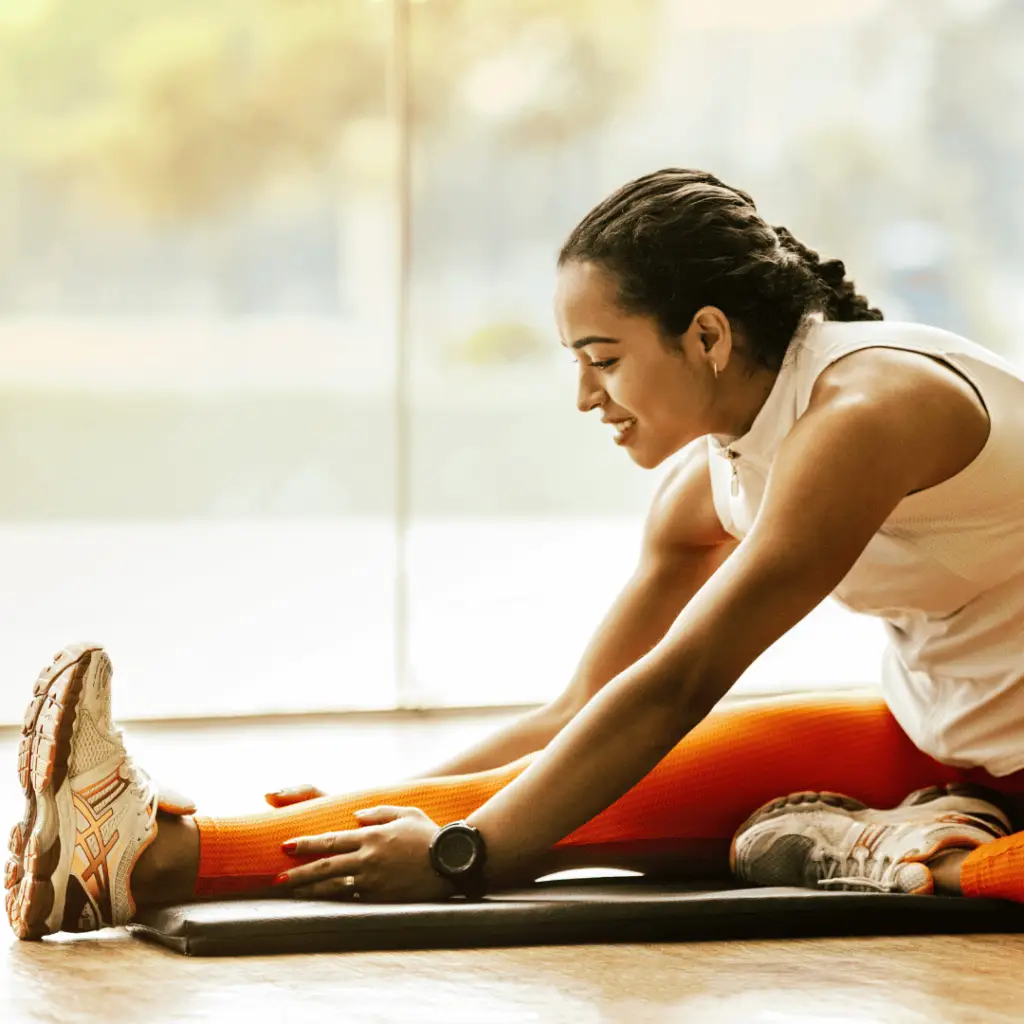
By visiting our site, you agree to our privacy policy regarding cookies, tracking statistics, etc.
When you purchase through links on our site, we may earn an affiliate commission at no cost to you. Here’s how it works.
Walking Effects Your Health and Wellbeing, and doing an indoor or outdoor walking challenge can significantly impact both your physical and mental health. Physically, walking strengthens the heart, lungs, and muscular system, while also improving circulation and boosting immune system responses. These benefits contribute to a reduced risk of chronic illnesses such as diabetes, obesity, and cardiovascular diseases. Regular walking also enhances muscular endurance and flexibility, making everyday activities easier and reducing the risk of falls and injuries as we age.
Mentally, walking offers an incredible return on investment. The simple act of walking stimulates the production of stress-reducing hormones, which not only calm your mind but also sharpen your focus. Regular walkers often report better sleep patterns, which is a critical component of overall health and well-being. Furthermore, walking provides a time for reflection and meditation, allowing you to step away from the stresses of daily life and gain perspective in a natural, healthy way.

Walking is a simple, accessible form of exercise that packs a powerful punch when it comes to health benefits. Regular walking sessions can lead to significant improvements in overall health, making it a recommended activity for people of all ages and fitness levels. Here are some of the key health benefits associated with walking:
Lower Blood Sugar Levels: Walking helps in regulating blood sugar levels by improving the body’s ability to use insulin. This is particularly beneficial for those managing diabetes or pre-diabetic conditions. Regular walking, especially after meals, can help lower blood sugar levels and stabilize insulin response
Incorporating walking into your daily routine can be one of the easiest and most effective ways to achieve a healthier lifestyle. With virtually no equipment needed and the ability to tailor it to any fitness level, walking offers a robust solution for improving physical and mental health.

Starting an exercise routine can feel daunting, especially if you’re new to fitness or coming back after a long break. However, walking is a wonderfully accessible form of exercise that requires no special skills or equipment and can be easily tailored to your current fitness level. For beginners or those who feel out of shape, the key is to start slowly and gradually increase the pace and duration of your walks.
An indoor walking challenge is ideal for beginners because it allows you to control the environment and intensity. Without the worries of uneven sidewalks, weather conditions, or traffic, you can focus solely on your movement. You can start with short, 5-minute walks several times a day, slowly building up to longer durations as your confidence and stamina improve. The privacy of an indoor setting may also ease the intimidation factor, providing a safe space to develop your fitness without concern for external judgment. Read more on tips how to start if you are overweight or have problems walking.
Walking doesn’t require you to push your limits right away; rather, it invites you to grow at your own pace. By incorporating regular walking into your life through an indoor walking challenge, you’re not just taking steps towards physical fitness, but also towards a happier, healthier you. Ready to take the first step?

Lets face it – we live busy lives, and finding time and space for exercise can be a challenge, but what if the path to fitness was as close as your living room, hallway, or office? An indoor walking challenge is designed to make this a reality. This fitness initiative provides a structured plan where participants engage in walking exercises within the confines of their own homes. It’s perfect for those days when getting outside is difficult, or you simply prefer the privacy and comfort of your home environment. From marching in place to navigating your home’s perimeter, the indoor walking challenge adapts to your space and schedule, making fitness an accessible goal for everyone.
Walking indoors on a treadmill or walking pad offers a convenient and controlled environment for exercise, making it an excellent option for maintaining fitness regardless of weather or outdoor conditions. These devices allow you to customize your workout with adjustable speeds and inclines, enabling you to simulate outdoor walking or hiking scenarios that challenge your endurance and strength without leaving your home. Additionally, treadmills and walking pads can help track your progress more precisely, providing feedback on distance, speed, and calories burned. This can be particularly motivating for those who enjoy monitoring their improvements and setting specific fitness goals. Moreover, indoor walking equipment like treadmills and walking pads are ideal for those who prefer privacy during their workouts or need to multitask, such as catching up on a favorite show or listening to an audiobook while exercising. Overall, using a treadmill or walking pad for indoor walking ensures that you can maintain a consistent walking routine, essential for cardiovascular health, weight management, and overall wellness.

As we just read walking indoors can have a lot of benefits. Nevertheless walking is a versatile exercise that can be enjoyed both outdoors and indoors, each offering its unique set of benefits. Understanding these can help you decide the best way to incorporate walking into your daily routine, depending on your lifestyle, preferences, and goals.

While outdoor walking provides a sensory experience and numerous health benefits from being in nature, indoor walking offers practical advantages that make it easier to stick to a regular exercise schedule. Outdoor walking is best for those who appreciate nature and the variability of the natural environment, and who benefit from the psychological boosts of being outside. On the other hand, indoor walking is ideal for those who prefer routine and consistency and need a reliable, weather-proof way to fit exercise into a busy schedule.
Both forms of walking ensure cardiovascular benefits, improve muscular strength, and promote weight management. The choice between indoor and outdoor walking often comes down to personal preference, specific health goals, and lifestyle needs. Whether you choose to walk inside or outside, the most important factor is regularity and enjoyment, ensuring that walking remains a staple in your exercise routine.
Committing to a walking challenge can provide the structure and motivation needed to turn sporadic physical activity into a regular practice. Here are several compelling reasons to start a walking challenge:
By engaging in a walking challenge, you not only improve your physical and mental health but also build a foundation for a more active and energized life. It’s about taking those first steps towards a healthier you and enjoying every step along the journey. Ready to challenge yourself?

Our Free 30-Day Walking Program is designed to seamlessly integrate walking into your daily routine while progressively building up the length of your training sessions. This structured approach ensures that you can adjust to the physical demands comfortably and sustainably, making it more likely to become a lasting habit.
The program starts with more manageable walking sessions of 30 minutes each day for the first week. This initial stage is crucial for establishing a routine without overwhelming you, making it easier to stick with the program. As you move into the second week, the duration of each walk increases to 45 minutes. This gradual increase helps your body adapt to longer periods of activity, boosting your endurance and strength.
By the third week, you’ll progress to walking for 60 minutes each day. This extended time not only enhances your cardiovascular fitness but also significantly contributes to calorie burning and muscle toning. In the final week, we challenge you to reach 90-minute walking sessions. This peak phase aims to maximize your stamina and showcase how much progress you’ve made over the month.
The key to making walking a daily habit lies in the structure and consistency of the program. By committing to a set schedule, you naturally incorporate walking into your daily routine, just like any other essential activity. To support this, the program includes daily reminders and motivational tips to keep you engaged and inspired.
Additionally, each week of the program builds on the previous one, not just in duration but also in the incorporation of varied routes and walking paces. This variety keeps the program interesting and challenging, preventing monotony and helping you stay committed.
Moreover, tracking your progress is an integral part of the program. Seeing tangible improvements, whether in walking duration, pace, or how you feel overall, serves as a powerful motivator. It reinforces the walking habit, encouraging you to continue beyond the 30 days.
By the end of the 30 days, you’ll not only have improved your physical health but also established a sustainable habit of daily walking. This program is not just about reaching fitness goals but also about embedding a healthy, active lifestyle into your everyday life.

This detailed guide maps out each day’s walking task, allowing you to see your progress visually and plan your schedule accordingly. The chart acts as a daily reminder of your goals and is a fantastic tool to keep you motivated.
Each slot in the chart represents a day of the challenge, with specified goals for time or steps, depending on your preference. As you complete each day’s task, you can mark it off on the chart, providing a satisfying visual representation of your commitment and progress. This chart not only helps keep you accountable but also serves as an encouragement tool, showcasing just how far you’ve come over the month.
To ensure you get the most out of your daily walking routine, here are some step-by-step instructions and tips to help you stay on track and enjoy each session:
Schedule Your Walks – Consistency is key, so try to schedule your walks at the same time each day. This helps establish a routine and makes it easier to stick to your plan.
Dress Appropriately – Wear comfortable, loose-fitting clothing suitable for the weather, and invest in a good pair of walking shoes that provide support and cushioning to protect your joints.
Warm-Up – Begin each walk with a 5 to 10-minute warm-up to get your muscles ready and your heart rate up. This can include light stretching or a slow walk that gradually increases in pace.
Set Your Pace – Once warmed up, set a comfortable yet brisk pace that allows you to maintain a conversation without running out of breath. This is typically a little faster than your warm-up pace.
Stay Hydrated – Bring a water bottle, especially on longer walks or in warm weather, to stay hydrated throughout your walk.
Use Proper Form – Keep your head up, shoulders back, and spine straight. Swing your arms naturally and keep your abdominal muscles slightly tightened to support your spine. Your steps should roll from heel to toe.
Vary Your Routes – To keep your routine interesting and engaging, vary your walking routes. This not only keeps boredom at bay but also challenges different muscle groups.
Cool Down – End your walk with a 5-minute slower pace to gradually reduce your heart rate to normal. Follow this with some gentle stretching to help prevent muscle stiffness and soreness.
Track Your Progress – Use a fitness tracker or an app to keep track of your distance, time, and calories burned. Watching your progress can be incredibly motivating.
Listen to Your Body – Pay attention to how your body feels during the walk. If you experience any pain or discomfort, adjust your pace or stop if necessary.
By following these steps, you’ll maximize the benefits of your daily walking routine, making it a healthy and enjoyable part of your lifestyle.
Stretching after your walk is as crucial as the warm-up because it helps to cool down the body, improve flexibility, and decrease muscle stiffness and soreness. Post-walk stretches should focus on the main muscle groups that were active during the walk, as well as those that can contribute to overall posture and alignment.

Warming up before a walk is crucial, especially for beginners, as it prepares the body for physical activity and helps prevent injuries. Starting with a gentle warm-up increases the temperature of your muscles, making them more flexible and responsive, which reduces the risk of strains or sprains. Simple activities such as gentle stretching or a slow, easy pace for the first few minutes can significantly enhance your walking experience. This gradual start also allows your heart rate to increase steadily, which is safer and more comfortable, particularly for those who are new to exercise or returning after a break. For beginners, taking it slow at the beginning is essential not just for physical readiness but also for building confidence and ensuring the exercise routine is enjoyable and sustainable. By easing into the walk, you allow yourself to adjust to the new activity, setting a solid foundation for increasing intensity as your fitness improves over time.
Stretching after your walk is as crucial as the warm-up because it helps to cool down the body, improve flexibility, and decrease muscle stiffness and soreness. Post-walk stretches should focus on the main muscle groups that were active during the walk, as well as those that can contribute to overall posture and alignment.
Key areas to stretch include:
– Calves: Stretch your calves by placing your hands on a wall, extending one leg back, and gently pressing the heel towards the ground until you feel a stretch in the back of your lower leg.
– Hamstrings: For your hamstrings, you can perform a seated or standing stretch by extending one leg out and reaching towards your toes with both hands.
– Quadriceps: To stretch your quadriceps, stand on one leg, pull the opposite foot towards your buttocks, and hold your ankle with your hand. Ensure you keep your knees together and push your hip forward to enhance the stretch.
– Hip Flexors: Step one foot forward into a lunge position and lower your back knee slightly towards the ground, keeping your back straight and pushing your hips forward to stretch the hip flexors.
– Lower Back: A gentle way to stretch your lower back is to lie on your back, pull your knees to your chest, and rock gently from side to side.
– Shoulders and Arms: Since arm motion is involved in walking, stretching your shoulders and arms can be beneficial. You can do this by bringing one arm across your chest and gently pulling it closer with your other arm, and by linking your hands behind your back and gently lifting your arms to stretch the shoulders and chest.
Spending 5 to 10 minutes on these stretches will help reduce any post-activity tightness and prepare your body for the next day’s walking, enhancing both your flexibility and your walking performance.

Add resistance to your walking routine by knowing the Best Ankle Weights.
